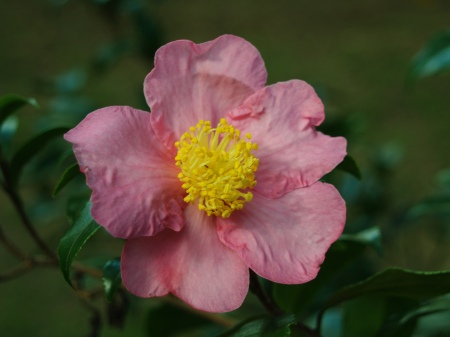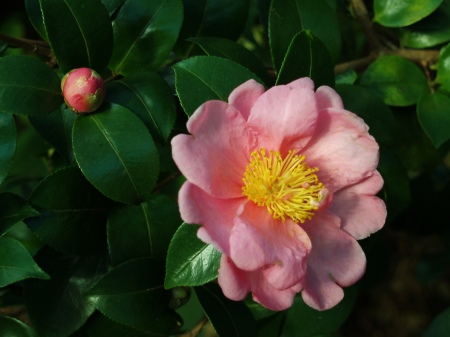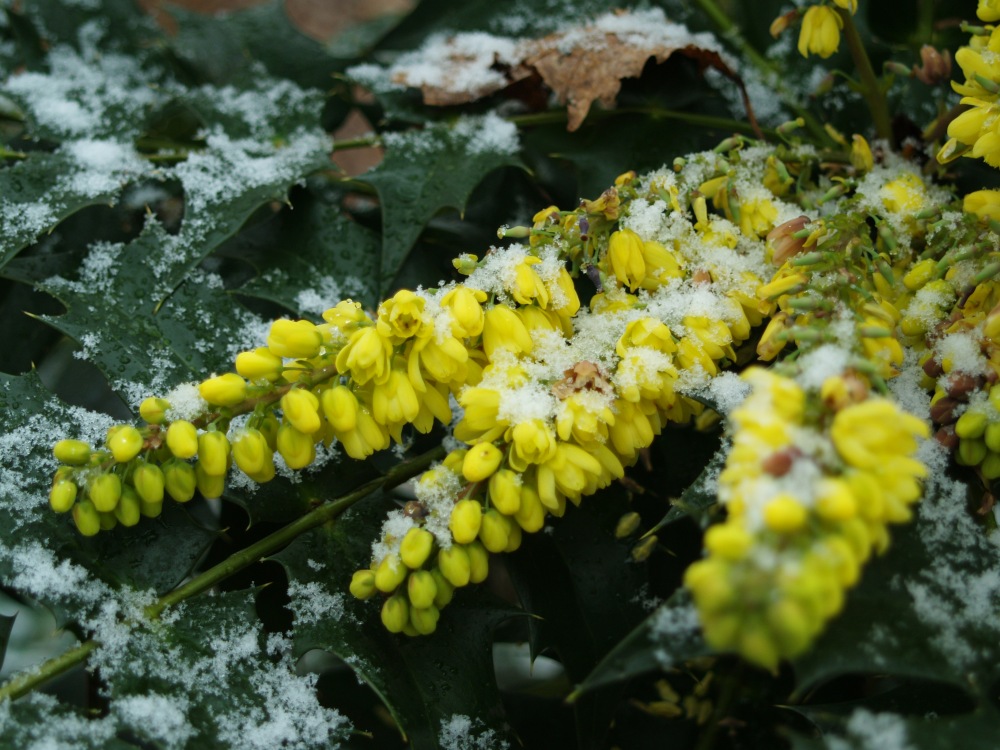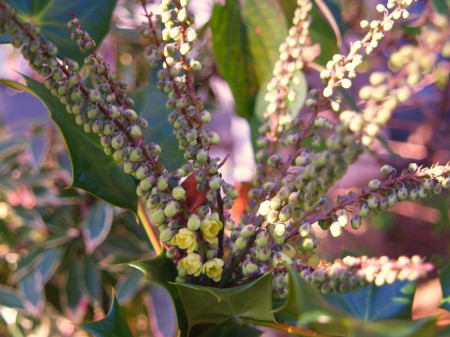I hesitate to make pronouncements of any but the most obvious sorts. Too frequently hasty conclusions are quickly disproved, and unquestioned observations are contradicted.
Along the driveway there are a handful of hybrid camellias, two of one cultivar, and three of the other, ‘Winter’s Star’ and ‘Winter’s Interlude’, though I don’t recall which is which until they are flowering. I’m unable to figure which cultivar is the three or the two because the identical varieties do not flower concurrently and their foliage is too similar.
The furthest plants are only a dozen feet apart, but they will often flower two months apart. The simplest explanation for the disparate flowering period is the slight difference in sun exposure, with one spot open to the setting western sun while the other is more shaded by deciduous trees.
The three camellias facing the sunset through early autumn (when the sun’s path shifts noticeably southward) begin flowering in November, while the two in the shade of the Golden Rain tree flower sporadically through December and January. There are often numerous fat buds that do not open at all, apparently victim to repeated freezing temperatures (though occasionally there will be a few scattered blooms in March).
For years I accepted this pattern, and explained that the varying bloom times were the result of the differing sun exposures. But, earlier this year two tall (forty feet tall) hornbeams immediately beside the Golden Rain were removed, so that now the two camellias that were more shaded are exposed to considerably more sun through all the seasons. Contrary to my reasoning, the camellias continue to flower two months later, and only now, in late January are the first flowers of ‘Winter’s Star’ opening, with dozens of buds unopened. Three feet away, the buds of ‘Winter’s Interlude’ are swelling, but there are no flowers yet.
The three camellias nine and twelve feet away have no buds at all. These flowered completely in November, the best period of blooms I can recall. For several weeks there were a handful of flowers at their peak, and others that were just past or nearly at their peak. In January the flowers are damaged by frost and freeze so that each is edged in brown, so it would be helpful to gain some insight to locate camellias where they will flower in November rather than January. 
The point here is that I have presumed that one set of camellias were delayed in bloom due only to the lack of exposure to sun when apparently the reasons are much more complex. I’ve little doubt that the amount of sunlight plays a part, but how much, I haven’t a clue.
And, it is not only camellias that betray my common sense notion that more sun will spur earlier winter flowering. Around the garden, the early winter flowering ‘Winter Sun’ mahonia (Mahonia x media ‘Winter Sun’) is almost at its peak bloom in more shaded areas, while in nearly full sun the flowers have faded considerably. The ones growing with more sun flowered earlier, and faded first. To my thinking, this makes perfect sense, but the late winter blooming leatherleaf mahonia (Mahonia bealei) defies this logic.
There are five or six leatherleaf mahonias growing in the garden, several that were planted and other seedlings that were spread by birds who consumed the grape-like fruits. In late January, the ones in the most sun have barely developed flower buds while the few in deepest shade have full panicles of buds and already show some color. The mahonias in nearly full sun will flower weeks after the shaded plants, so whatever the influences it’s clear that I don’t understand them.
So, enough of of conclusions. It is abundantly clear, I’m certain, that I haven’t a sufficiently analytical mind to figure such matters, so I’ll not pretend that I know more than I do. There is no harm in any of this, I suppose, but the lesson is perhaps that simple minds are intended to enjoy rather than analyze. If I overstep to declare anything more than my casual observations you are best served by ignoring me.
Thanks for sharing some color with us in more dreary cimes. Right now the main thing i see is the remnants of a six inch snow, part of Winter Storm Iago that his my end of Virginia.